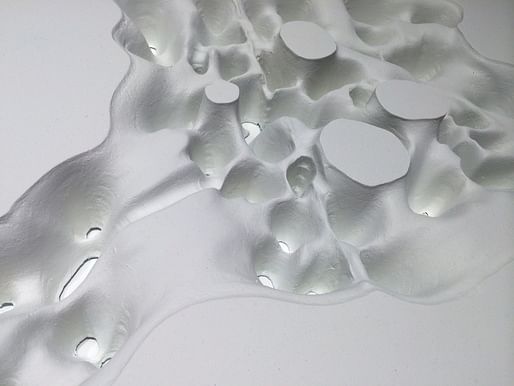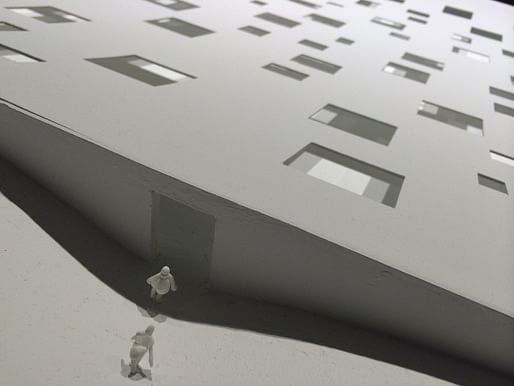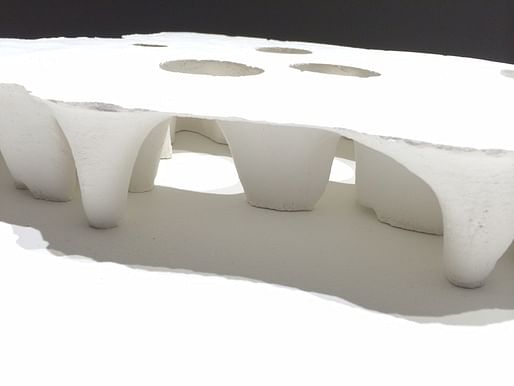
Hi Archinect,
After the screening of If You Build It, film festival director Kyle Bergman and John Connell, the founder of Yestermorrow Design Build School, had a short conversation and I wanted to share it with you here. I was interested to see Connell live, as I had been to Yestermorrow for Steve Badanes and Jim Adamson's excellent Community Design/Build course mannnnnny years ago.
KB: John, when you started Yestermorrow in 1980, what inspired you? You were working at Yale?
JC: I forget this chapter a lot, but I was working with underprivileged--actually, kids that would have been incarcerated otherwise… We were told, we'll give you the dump and you can build your building on the dump. These students literally had the choice between jail and coming to this school. But we started giving them power tools…
 …and teachers started to come, and other people too, and we thought, this education doesn't have to be limited to these kids, but homeowners and anyone can learn from this.
…and teachers started to come, and other people too, and we thought, this education doesn't have to be limited to these kids, but homeowners and anyone can learn from this.
JC: Building by itself is tough. Building with kids, or with young adults who don't know how to build, and trying to imbue the design content into the process, is insanely complicated. But, with all teaching things, the people who learn the most are the teachers. And the students were like this, they were always appreciative, and would come back, and it was always transformative for them. But even more for me.
JC: Kyle and I met on a building that took 16 years to build, entirely built with students on 6 week classes.
KB: I think you built an original model, and each year it would change--
JC: Well the original model was nothing but…a square, rotated into a diamond; and bring it up a storey with a miter joint. So diamond, up, diamond. It's an elbow. That was the model; there were no doors, windows…and we gave that to the students and started to talk about how it was a roof peak on all sides. …It also generated conversations about massing, weathering, flashing, siting--and I had to transmit the DNA of the conversation from the last class to the next class, without messing with it.
JC: I just took a quick trip through the trays and you can't miss that styrofoam. I think we're at an inflection point, because…when I was there, there was no substitute for putting your boots on and going out to build. The trades talk a different language, so they're not going to harvest their knowledge and bring it to you, you have to go out and do it. Now, though, with the ascendency of the computer and BIM, you can really build to the level you want digitally. And I wonder how much of that design content can be harvested for the design space.
Question from Shantel Blakely: What is the wider impact of design/build? Is it only for the enrichment of the people who do it, or do you see it as exerting pressure on the building industry, education, the wider context in which it happens?
JC: Yeah, it has a huge impact. One is that once you've implemented one of your own designs, you'll never be the same designer again. Even if you go on to doing institutional buildings, you'll have that eye for the connection [between design and construction]. It transforms the designer. As far as social architecture--some of you may have heard of Jersey Devil and Steve Badanes. He does this successfully at the University of Washington year in and year out.
Question from Ben Prosky: I think the financial outlook they had and the sacrifice they made is incredibly important. I think that the fact that they made sure that the kids got paid to do the building work was key. It meant that they could feasibly do it in the summer. I wonder how often that is a model, when they actually get paid for doing the work.
JC: That's part of the reality of it: the pay, budget, schedule, regulatory procedures and code. All that stuff shapes and gives form to the project. At Yestermorrow we try to bring as much of that pressure as possible so people learn how to do it.
…You could actually simulate the imperfections (of the physical world) in a digital space.
Question from the audience: With 3D printing, do you think that's a helpful tool, or does it take us away from [the reality of how things come together]?
JC: Don't you think that 3D printing is the most overhyped thing?
Questioner: Yes.
JC: Yes, it is.
Thanks for reading!
Lian
P.S. At the other end of the spectrum, there's an amazing Junya Ishigami exhibit on now in the lobby, in preparation for his visit next week.





This blog was most active from 2009-2013. Writing about my experiences and life at Harvard GSD started out as a way for me to process my experiences as an M.Arch.I student, and evolved into a record of the intellectual and cultural life of the Cambridge architecture (and to a lesser extent, design/technology) community, through live-blogs. These days, I work as a data storyteller (and blogger at Littldata.com) in San Francisco, and still post here once in a while.



No Comments
Block this user
Are you sure you want to block this user and hide all related comments throughout the site?
Archinect
This is your first comment on Archinect. Your comment will be visible once approved.